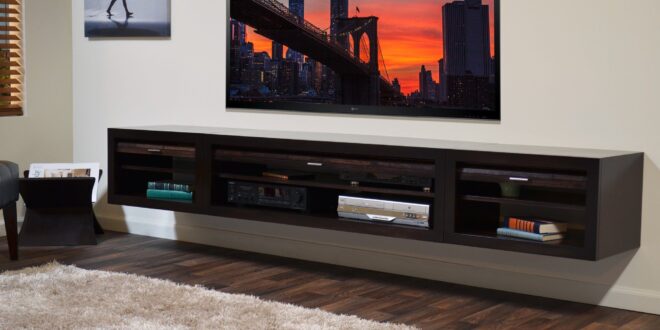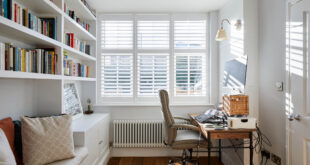Introduction: Reimagining Your Living Space with Floating TV Consoles
The living room, often hailed as the heart of the home, is where we unwind, entertain, and create lasting memories. It’s a space that should reflect our personality and cater to our comfort. In recent years, homeowners have been seeking innovative ways to maximize space, enhance aesthetics, and declutter their living areas. Enter the floating TV console – a revolutionary design element that seamlessly blends functionality with modern elegance.
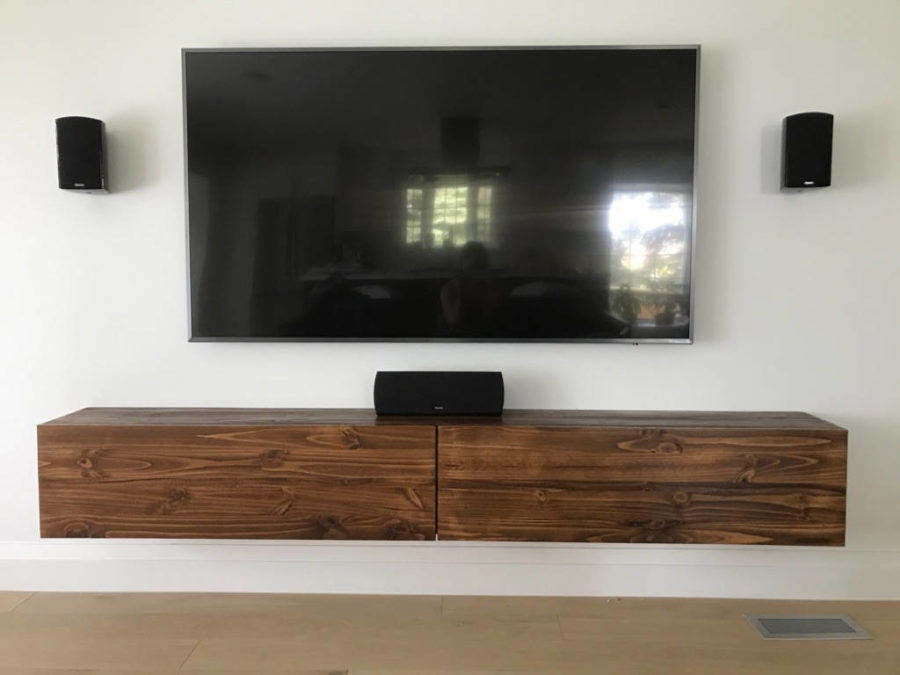
A floating TV console, also known as a wall-mounted TV unit, is a sleek and sophisticated storage solution that mounts directly onto the wall, creating a floating effect. This design choice not only adds a touch of contemporary flair to your living room but also offers a myriad of practical benefits. From saving valuable floor space to concealing unsightly cables, a floating TV console is a game-changer for modern living.
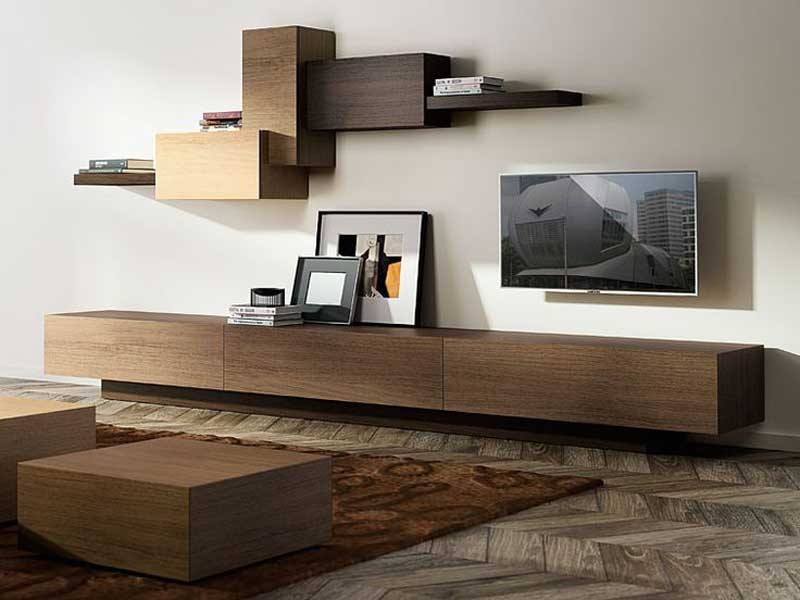
This comprehensive guide will delve deep into the world of floating TV consoles, exploring their numerous advantages, design considerations, installation tips, and styling ideas. Whether you’re renovating your existing living room or designing a new one from scratch, this guide will equip you with the knowledge and inspiration to make an informed decision and transform your entertainment area into a stylish and functional haven.
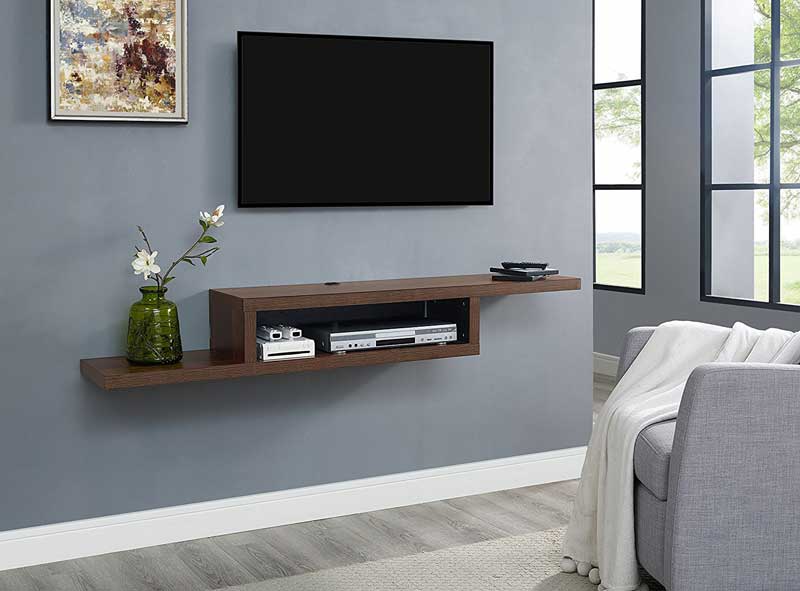
Why Choose a Floating TV Console? Unveiling the Benefits
The popularity of floating TV consoles is no accident. They offer a compelling combination of aesthetic appeal and practical advantages that traditional floor-standing TV units simply cannot match. Let’s explore the key benefits that make floating TV consoles a must-have for modern living rooms:
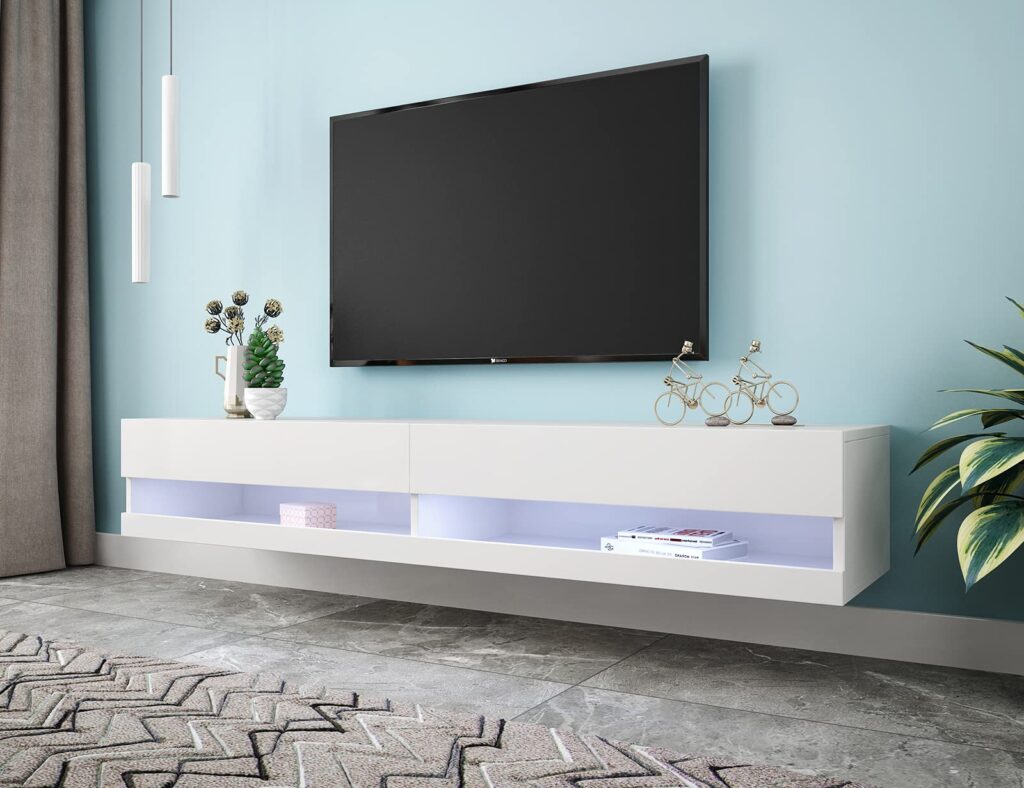
1. Maximizing Space: The Illusion of Spaciousness
One of the most significant advantages of a floating TV console is its ability to create the illusion of more space. By lifting the unit off the floor, you instantly free up valuable floor area, making the room feel larger and less cluttered. This is particularly beneficial for smaller living rooms or apartments where space is at a premium. The visual lightness of a floating console opens up the room, allowing natural light to flow freely and creating a more airy and inviting atmosphere.
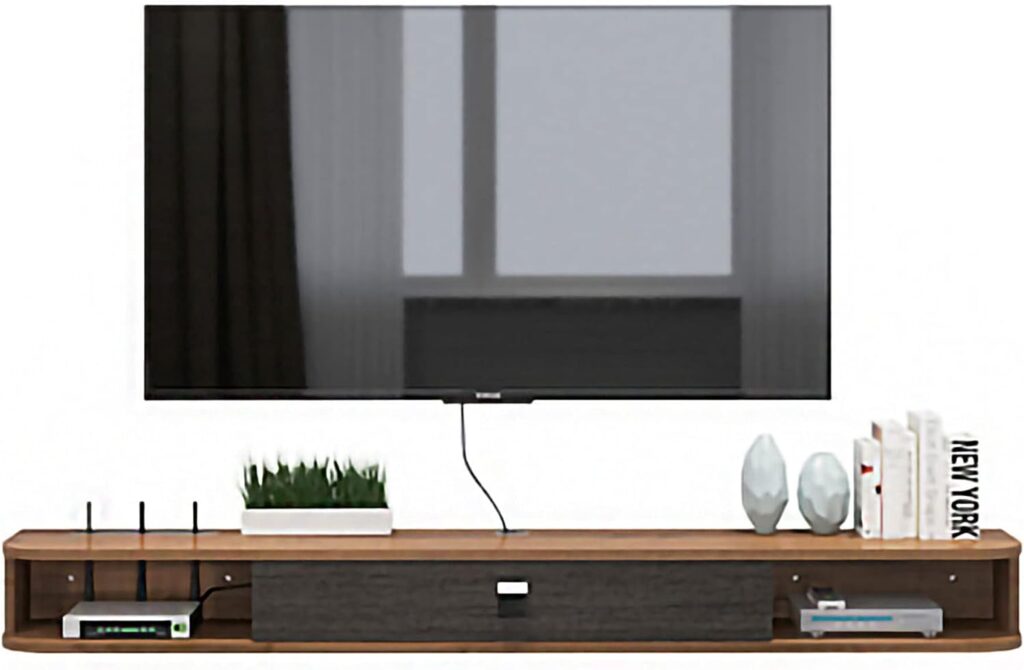
2. Modern and Minimalist Aesthetic: A Touch of Sophistication
Floating TV consoles are inherently modern and minimalist in design. Their clean lines, sleek profiles, and absence of bulky legs contribute to a contemporary aesthetic that complements a wide range of interior design styles. Whether you prefer a minimalist Scandinavian look, a modern industrial vibe, or a sleek and sophisticated contemporary style, a floating TV console can seamlessly integrate into your existing décor and elevate the overall look and feel of your living room. The streamlined appearance reduces visual clutter, creating a more calming and serene environment.
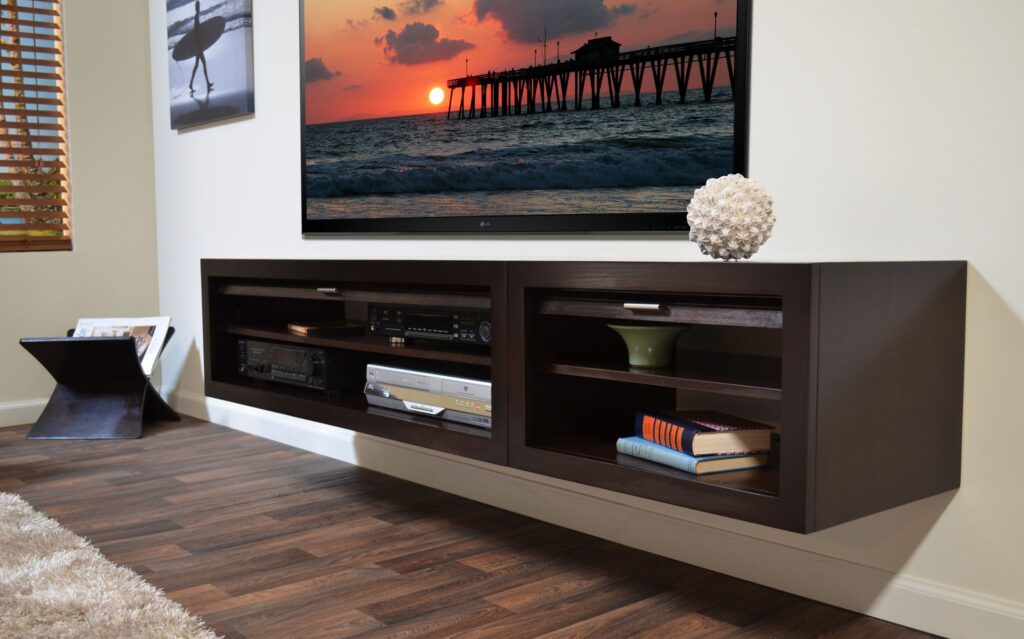
3. Enhanced Cleanliness: Easier Maintenance and Hygiene
Cleaning underneath traditional floor-standing TV units can be a cumbersome task. Dust and debris tend to accumulate in these hard-to-reach areas, making it difficult to maintain a clean and hygienic living environment. With a floating TV console, cleaning becomes a breeze. You can easily sweep, vacuum, or mop the floor underneath the unit without having to move heavy furniture. This makes it easier to maintain a spotless living room and reduces the risk of dust allergies and other respiratory issues.
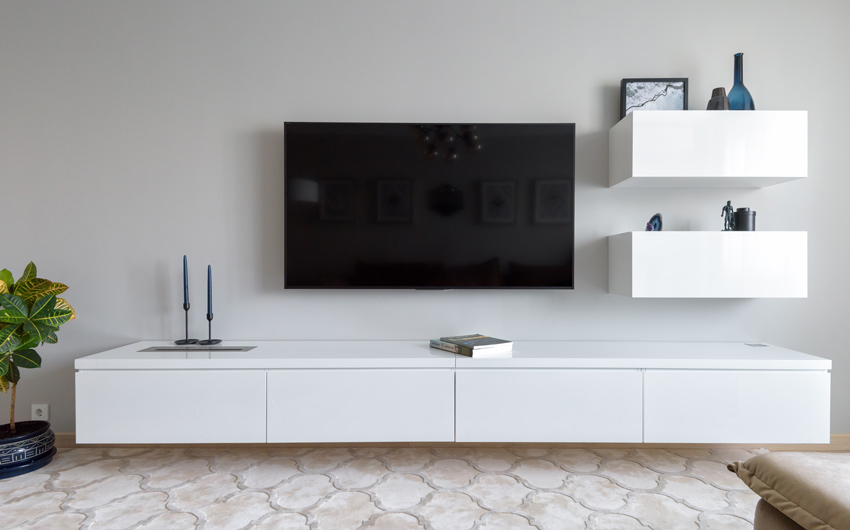
4. Cable Management: Concealing Unsightly Wires
One of the biggest challenges in any entertainment setup is managing the tangled mess of cables that connect various devices. A floating TV console typically features built-in cable management systems, such as grommets, channels, or hidden compartments, that allow you to neatly conceal and organize your cables. This not only improves the aesthetics of your living room but also prevents tripping hazards and makes it easier to access and reconfigure your devices. Say goodbye to unsightly wires and hello to a clean and organized entertainment area.
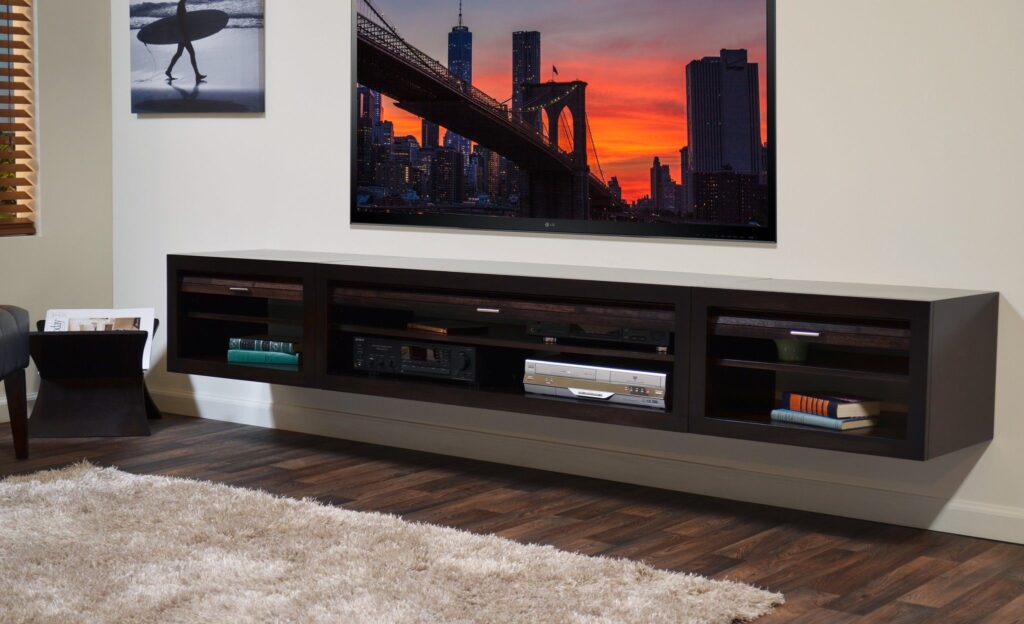
5. Customization and Versatility: Tailoring to Your Needs
Floating TV consoles come in a wide variety of styles, sizes, materials, and finishes, allowing you to customize your entertainment area to perfectly match your needs and preferences. You can choose from a range of configurations, including open shelving, closed cabinets, drawers, and adjustable shelves, to accommodate your media devices, gaming consoles, DVDs, and other accessories. You can also select from a variety of materials, such as wood, metal, glass, and laminate, to create a unique and personalized look that reflects your individual style. The versatility of floating TV consoles makes them a perfect choice for any living room, regardless of size or design aesthetic.
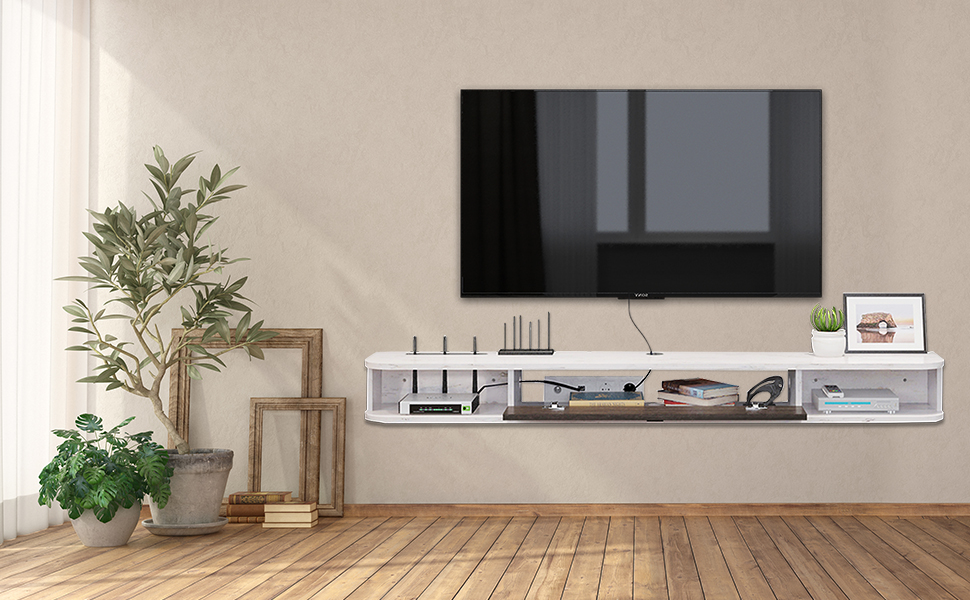
6. Safety Considerations: Mounting Security
When installed correctly, floating TV consoles are incredibly safe and secure. They are typically mounted to the wall using heavy-duty brackets and anchors that can support a significant amount of weight. However, it’s crucial to ensure that the wall is structurally sound and capable of supporting the weight of the console and its contents. If you’re unsure about your ability to install the console safely, it’s always best to hire a professional installer who has the expertise and equipment to ensure a secure and reliable installation. Properly installed, a floating TV console is just as safe, if not safer, than a traditional floor-standing unit, especially in households with children or pets.
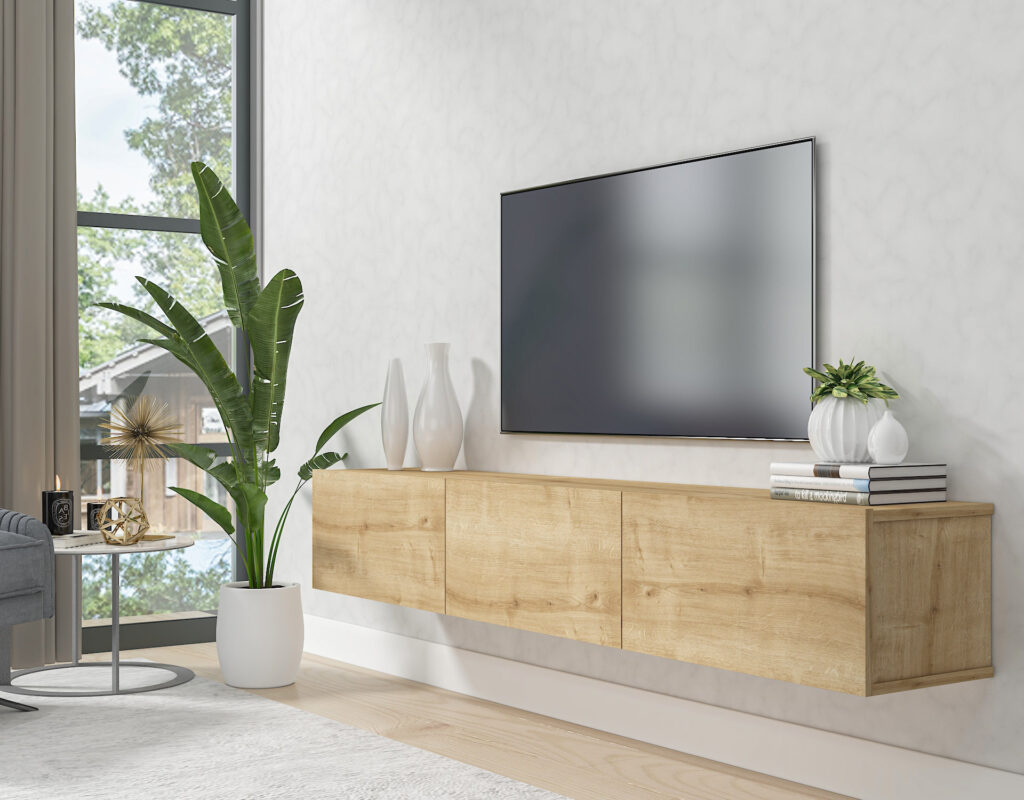
Design Considerations: Choosing the Perfect Floating TV Console
Selecting the right floating TV console for your living room requires careful consideration of several factors, including size, style, material, and functionality. Here are some key design considerations to keep in mind:
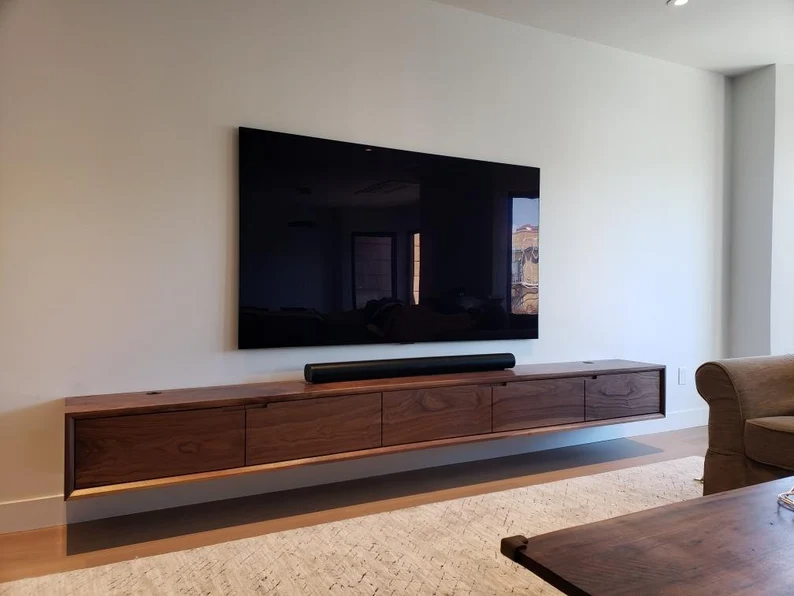
1. Size and Dimensions: Proportionality and Scale
The size of your floating TV console should be proportional to the size of your living room and the size of your TV. A console that is too small will look insignificant and out of place, while a console that is too large will overwhelm the room and make it feel cramped. As a general rule of thumb, the width of the console should be at least as wide as your TV screen, and ideally a bit wider to provide adequate support and visual balance. Consider the height of the console as well. A lower console will create a more modern and minimalist look, while a taller console will provide more storage space. Measure your wall carefully before purchasing a console to ensure that it will fit properly and leave enough space for other furniture and accessories.
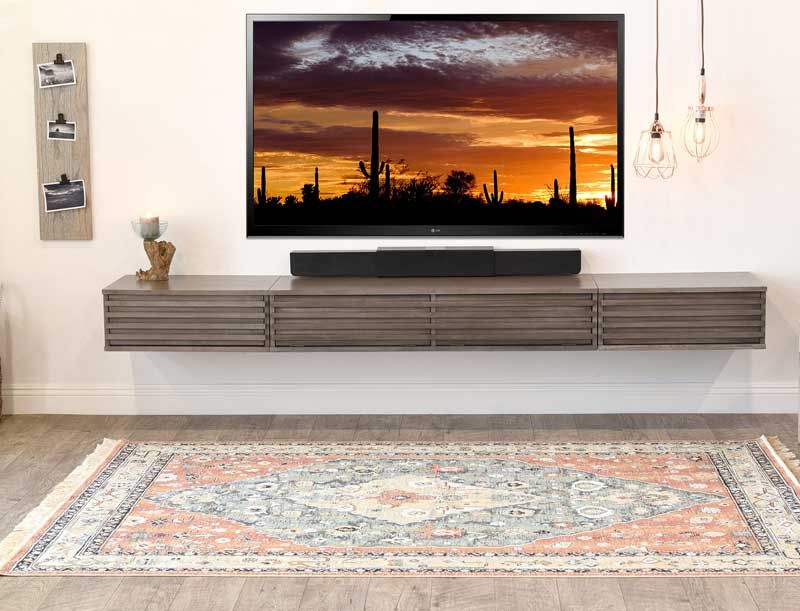
2. Style and Aesthetics: Complementing Your Décor
The style of your floating TV console should complement your existing décor and reflect your personal taste. There are countless styles to choose from, ranging from sleek and modern to rustic and traditional. Consider the color, material, and hardware of the console and how they will coordinate with your other furniture and accessories. If you have a minimalist living room, a sleek white or black console with clean lines and minimal hardware would be a good choice. If you have a more rustic or traditional living room, a wooden console with distressed finishes and ornate details would be a better fit. Consider the overall aesthetic you want to create and choose a console that will help you achieve that look.
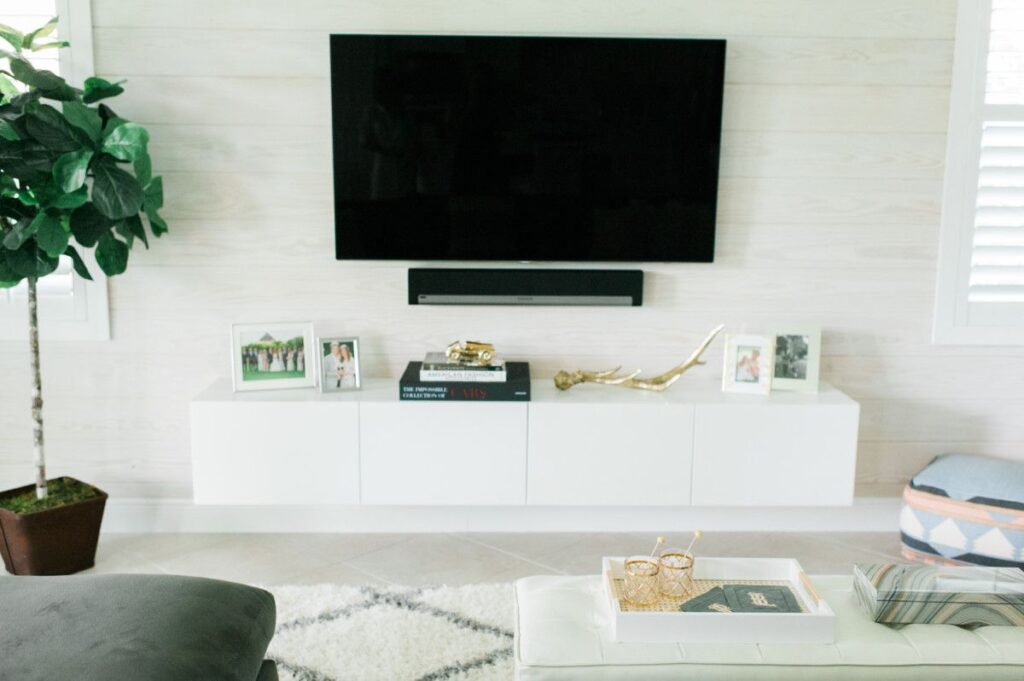
3. Material and Finish: Durability and Maintenance
The material and finish of your floating TV console will affect its durability, maintenance, and overall appearance. Common materials include wood, metal, glass, and laminate. Wood is a classic and versatile choice that can be stained or painted to match any décor. Metal is a durable and modern choice that is often used in industrial-style living rooms. Glass is a sleek and elegant choice that can add a touch of sophistication to your living room. Laminate is a cost-effective and low-maintenance choice that is available in a wide range of colors and patterns. Consider the pros and cons of each material and choose one that meets your needs and budget. The finish of the console is also important. A glossy finish will reflect light and make the room feel brighter, while a matte finish will absorb light and create a more subdued and sophisticated look.
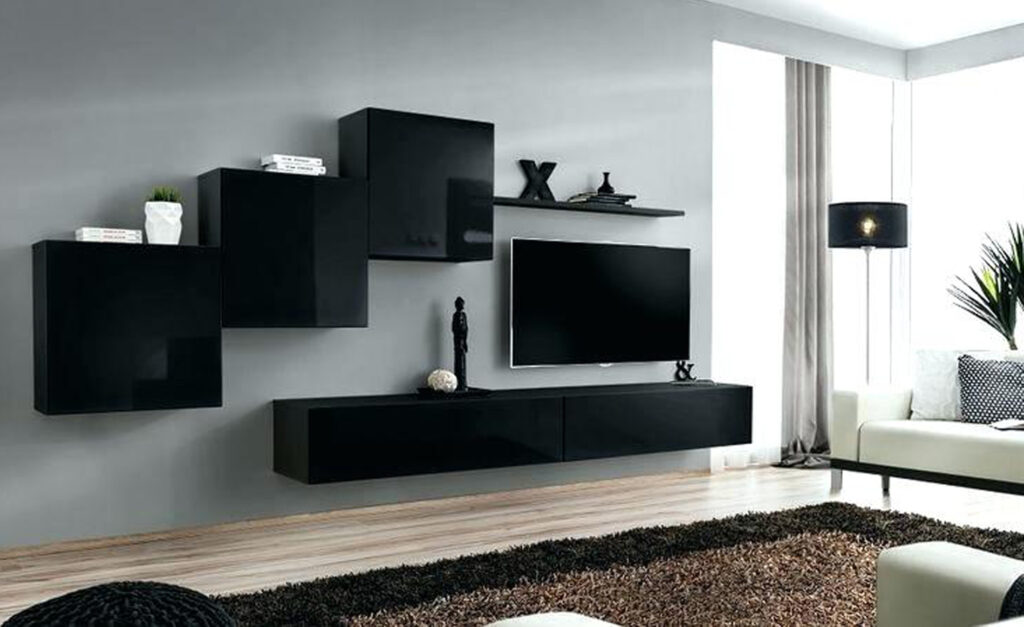
4. Storage and Functionality: Meeting Your Needs
Consider your storage needs when choosing a floating TV console. Do you need open shelving for displaying media devices and accessories? Do you need closed cabinets for storing DVDs, games, and other items? Do you need drawers for organizing cables and remote controls? Choose a console that provides the storage space you need without being too bulky or cluttered. Also, consider the functionality of the console. Does it have built-in cable management systems? Does it have adjustable shelves? Does it have ventilation holes to prevent overheating of your media devices? Choose a console that is not only stylish but also functional and practical.
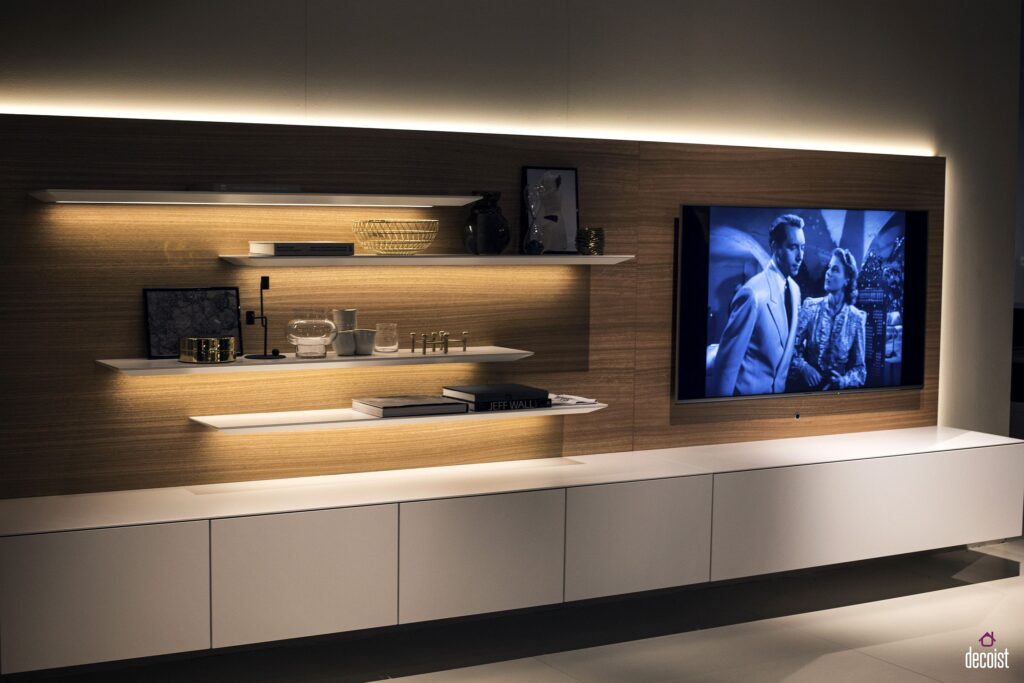
5. Color and Texture: Creating Visual Harmony
The color and texture of your floating TV console can have a significant impact on the overall look and feel of your living room. Consider the existing color scheme of your room and choose a console that will complement it. You can choose a console that is the same color as your walls for a seamless and minimalist look, or you can choose a console that is a contrasting color for a bold and dramatic look. Also, consider the texture of the console. A smooth and glossy texture will create a modern and sophisticated look, while a rough and textured finish will create a more rustic and natural look. Experiment with different colors and textures to find the perfect combination for your living room.
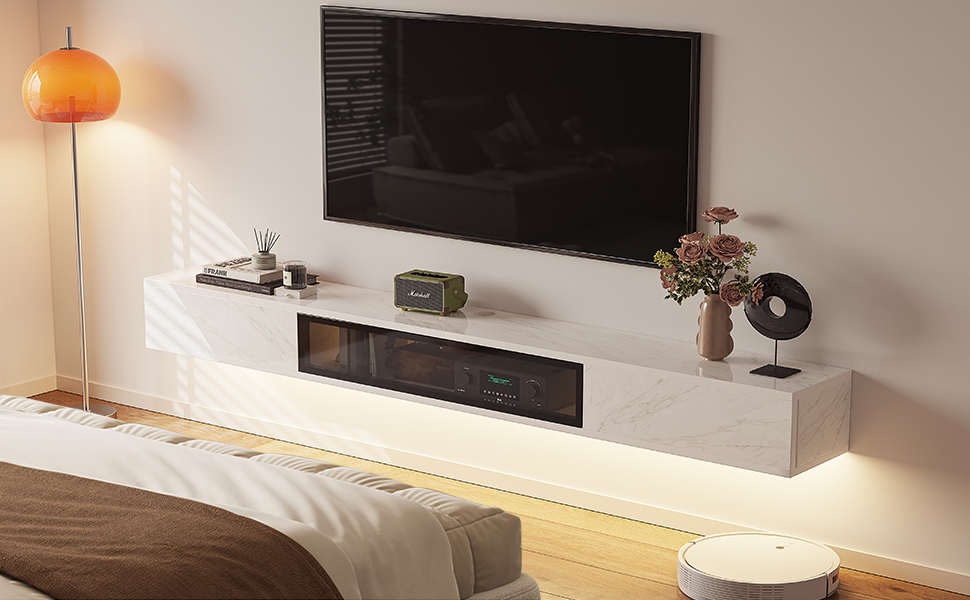
Installation Tips: Ensuring a Secure and Professional Finish
Proper installation is crucial for ensuring the safety, stability, and aesthetic appeal of your floating TV console. Here are some essential installation tips to follow:
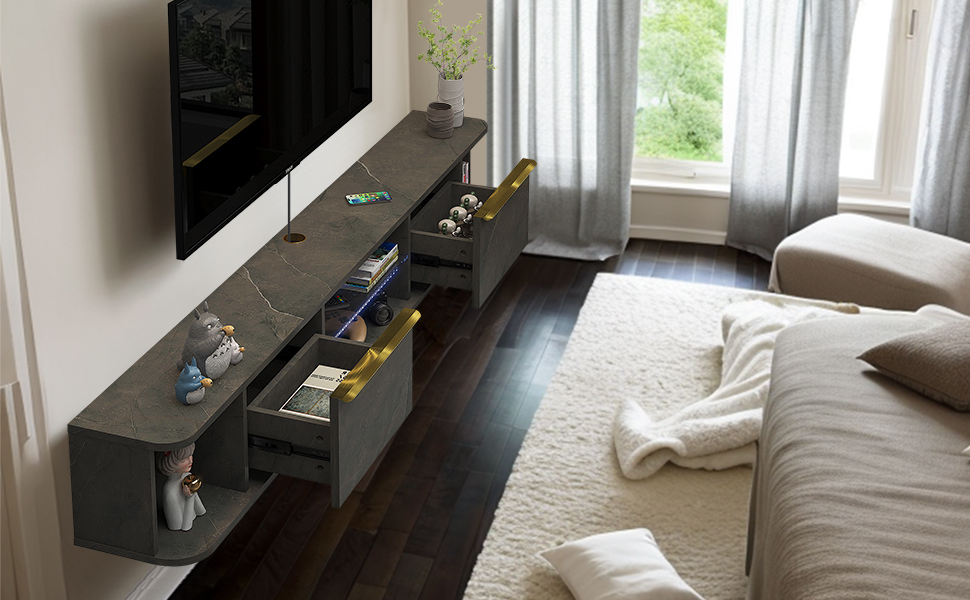
1. Wall Assessment: Identifying Wall Type and Structure
Before you begin the installation process, it’s essential to assess the type and structure of your wall. Most floating TV consoles are designed to be mounted on drywall or concrete walls. However, the installation process will vary depending on the wall type. Drywall is a common wall material that is relatively easy to work with, but it’s important to locate the studs behind the drywall to ensure a secure mounting. Concrete walls are more durable and require specialized tools and anchors for installation. If you have a plaster wall, it’s best to consult with a professional installer to ensure that the console is mounted properly and safely.
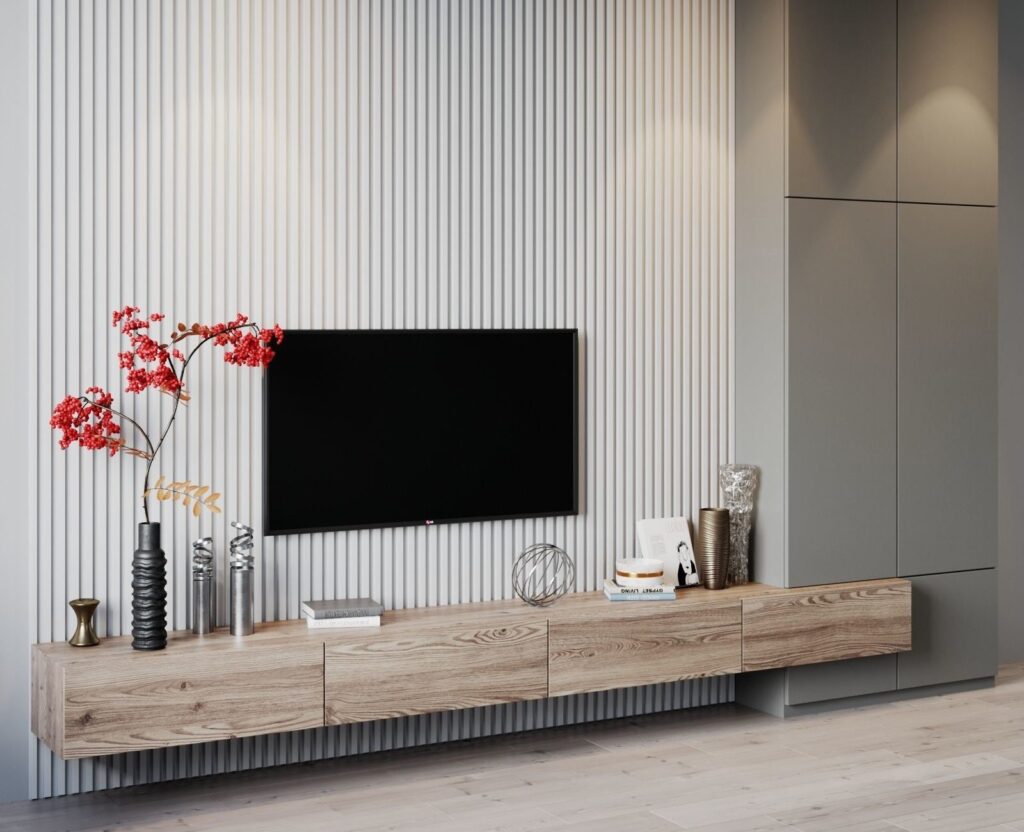
2. Stud Finder: Locating Wall Studs for Secure Mounting
If you’re mounting your floating TV console on a drywall wall, it’s crucial to locate the wall studs. Wall studs are vertical wooden or metal beams that provide structural support for the wall. Using a stud finder, locate the studs behind the drywall and mark their positions. You’ll need to anchor the console to at least two studs to ensure a secure and stable mounting. If you can’t find any studs in the desired location, you may need to use specialized drywall anchors that are designed to support heavy loads.
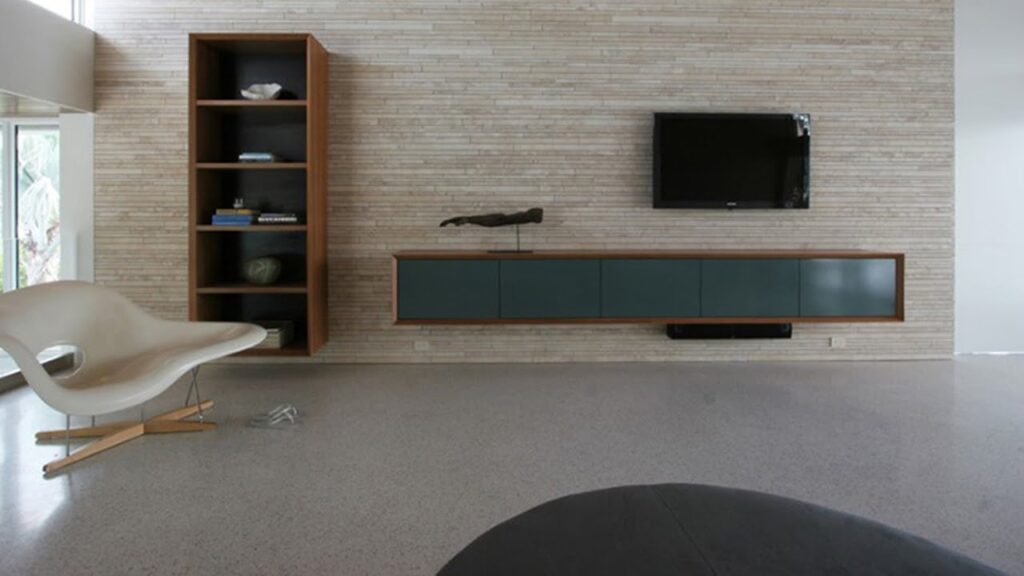
3. Leveling and Alignment: Achieving a Perfectly Straight Installation
Leveling and alignment are essential for achieving a professional-looking installation. Use a level to ensure that the console is perfectly horizontal and aligned with the wall. If the console is not level, it will look crooked and unbalanced. Use a measuring tape to ensure that the console is centered on the wall and that it’s at the desired height. A perfectly level and aligned console will not only look better but will also be more stable and secure.
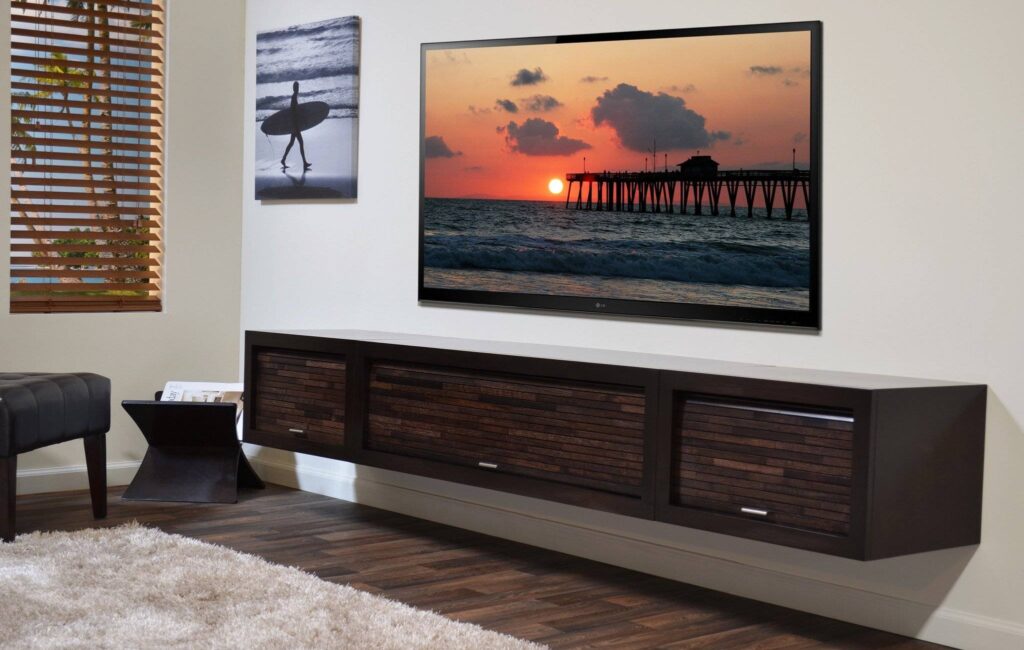
4. Mounting Hardware: Choosing the Right Brackets and Anchors
Choosing the right mounting hardware is crucial for ensuring the safety and stability of your floating TV console. Use heavy-duty brackets and anchors that are designed to support the weight of the console and its contents. Make sure that the brackets are compatible with the type of wall you’re mounting the console on. If you’re mounting the console on a drywall wall, use drywall anchors that are specifically designed for supporting heavy loads. If you’re mounting the console on a concrete wall, use concrete anchors that are designed to penetrate the concrete and provide a secure hold. Always follow the manufacturer’s instructions when installing the mounting hardware.
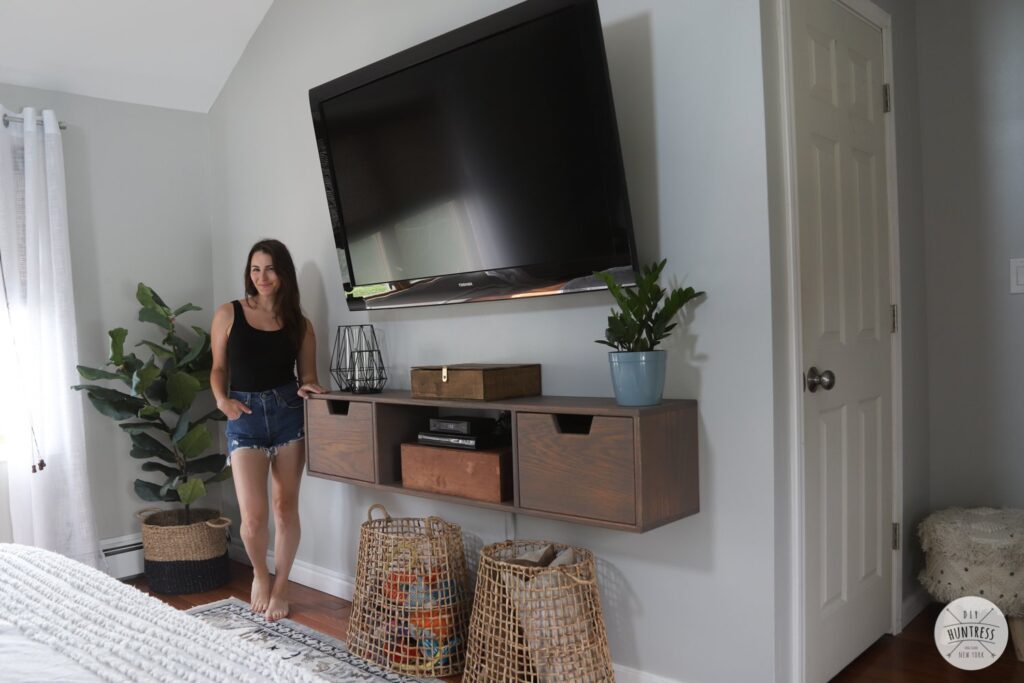
5. Cable Management: Concealing and Organizing Wires
Cable management is an important aspect of any floating TV console installation. Use cable ties, cable sleeves, or cable channels to neatly organize and conceal your cables. Run the cables behind the console and along the wall to minimize clutter and create a clean and organized look. Many floating TV consoles have built-in cable management systems that make it easier to conceal and organize your cables. Consider using these systems to achieve a professional and organized look.
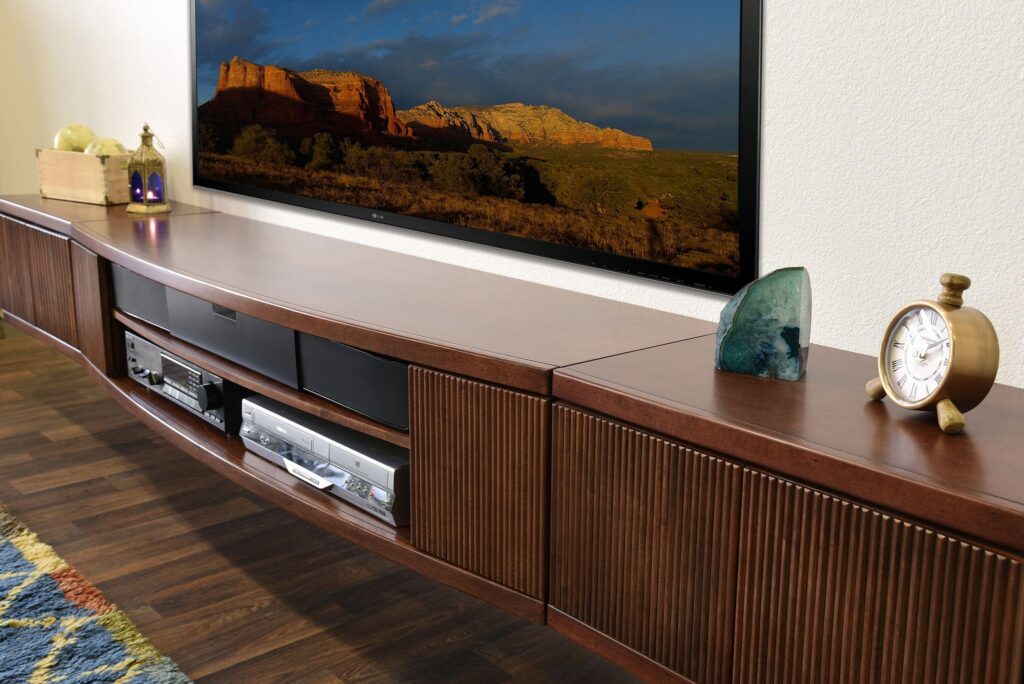
6. Professional Installation: When to Seek Expert Help
If you’re not comfortable installing your floating TV console yourself, or if you’re unsure about any aspect of the installation process, it’s always best to seek professional help. A professional installer will have the expertise and equipment to ensure that the console is installed safely and properly. They can also help you choose the right mounting hardware and provide advice on cable management and other aspects of the installation. Hiring a professional installer may cost more upfront, but it can save you time, effort, and potential headaches in the long run.
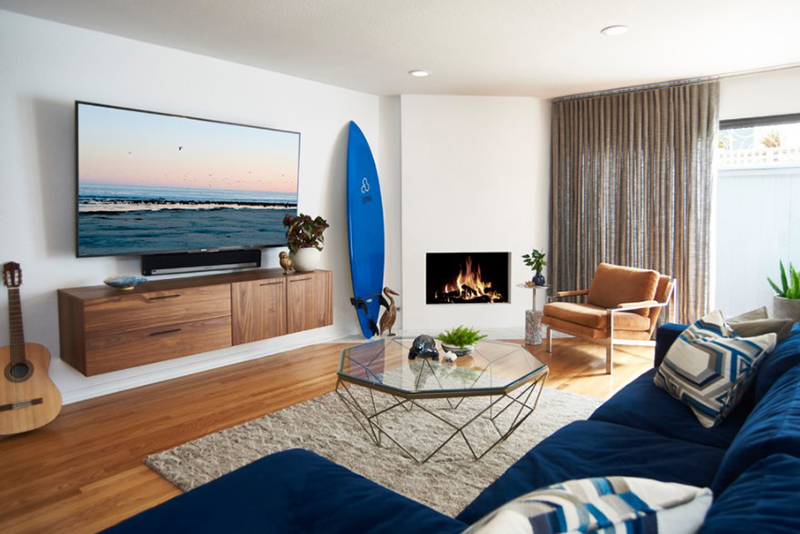
Styling Ideas: Creating a Cohesive and Stylish Living Room
Once your floating TV console is installed, it’s time to style your living room and create a cohesive and stylish entertainment area. Here are some styling ideas to inspire you:
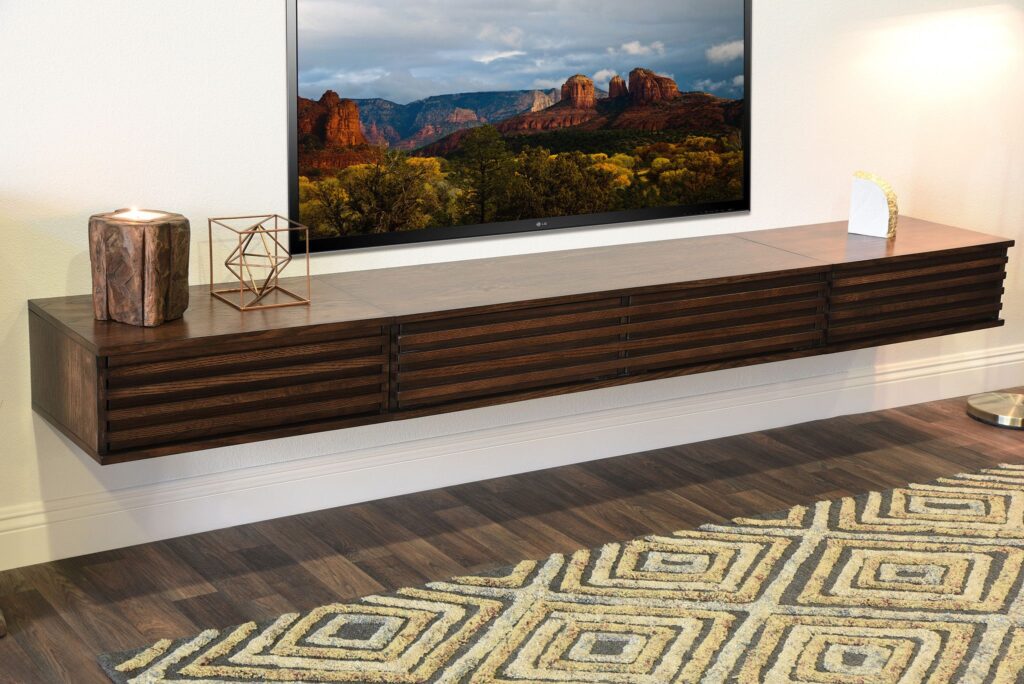
1. Accessorizing the Console: Adding Personal Touches
Accessorizing your floating TV console is a great way to add personal touches and create a unique and inviting space. Display your favorite books, decorative objects, or plants on the console to add color, texture, and personality. Choose accessories that complement your existing décor and reflect your personal style. Avoid cluttering the console with too many accessories, as this can make the room feel cramped and disorganized. A few well-chosen accessories can make a big difference in the overall look and feel of your living room.
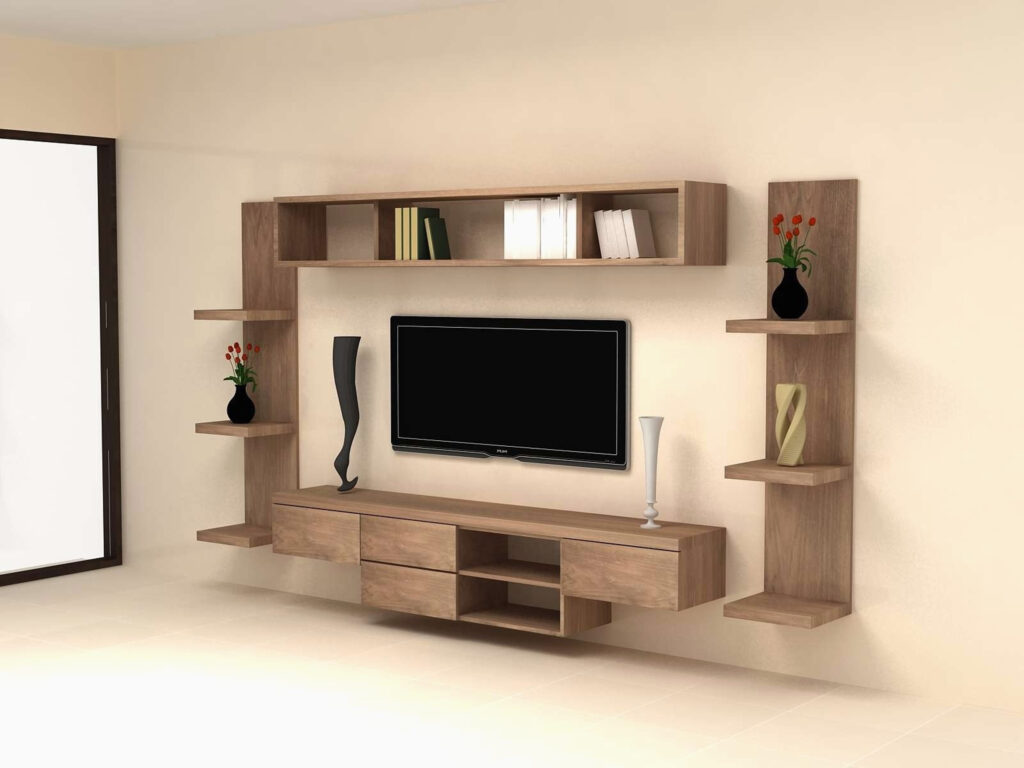
2. Wall Décor: Enhancing the Visual Appeal
The wall behind your floating TV console is a blank canvas that can be used to enhance the visual appeal of your living room. Consider adding artwork, mirrors, or wallpaper to create a focal point and add interest to the wall. Choose artwork that complements your existing décor and reflects your personal taste. Mirrors can help to reflect light and make the room feel larger and brighter. Wallpaper can add texture and pattern to the wall and create a more dramatic look. Experiment with different wall décor ideas to find the perfect combination for your living room.
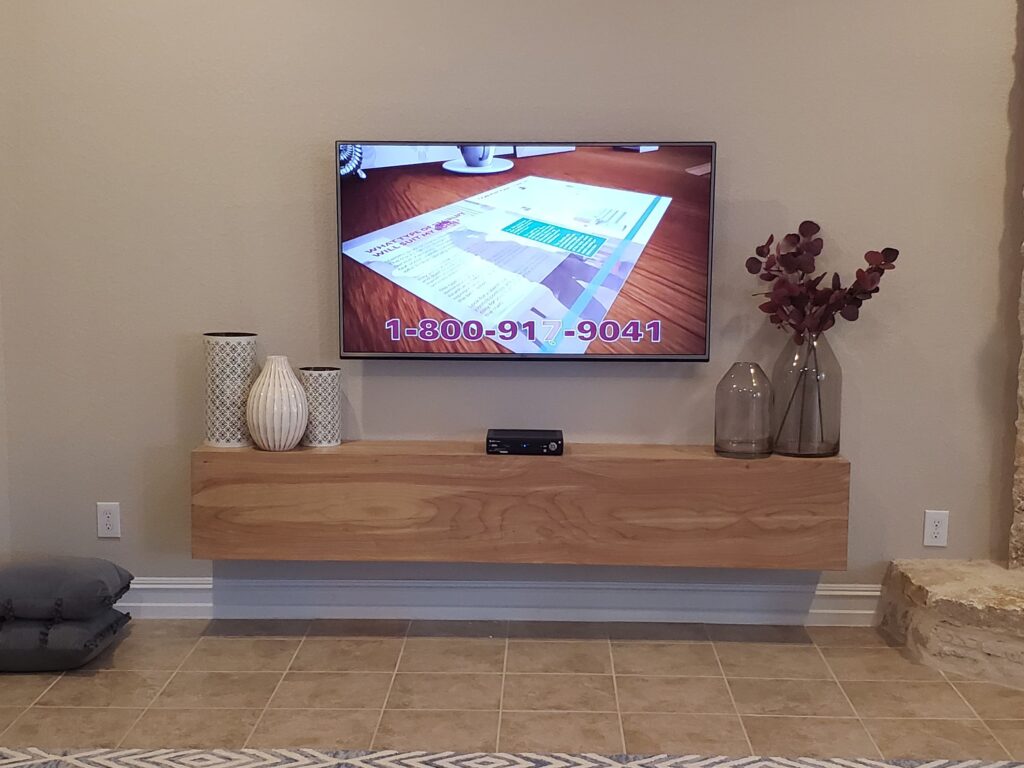
3. Lighting: Creating Ambiance and Functionality
Lighting is an essential element of any living room design. Consider adding ambient lighting, task lighting, and accent lighting to create a warm, inviting, and functional space. Ambient lighting provides overall illumination for the room. Task lighting provides focused light for specific activities, such as reading or watching TV. Accent lighting highlights specific features of the room, such as artwork or architectural details. Consider using dimmers to adjust the lighting levels and create different moods. Well-placed lighting can dramatically enhance the look and feel of your living room.
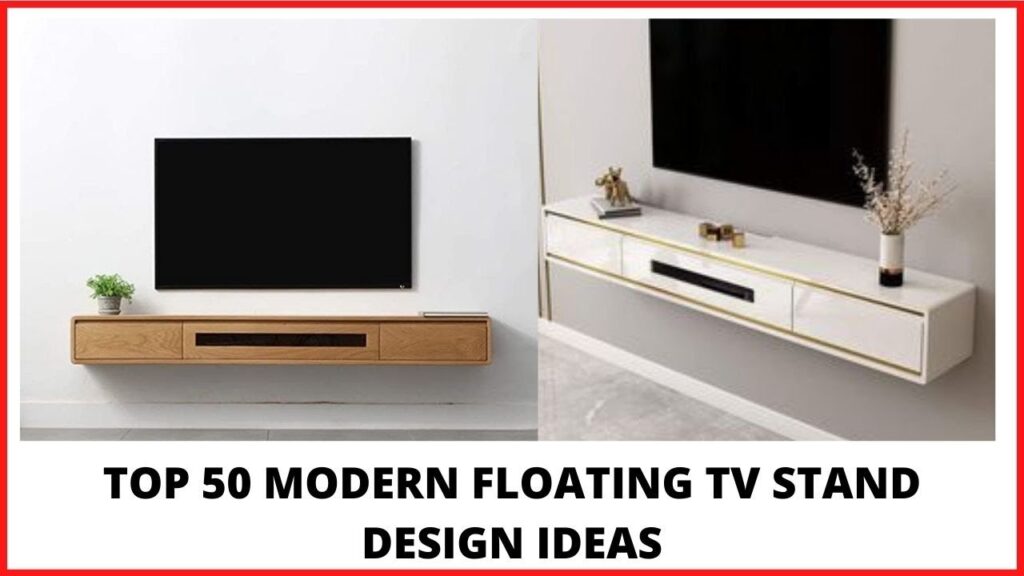
4. Seating Arrangements: Optimizing Comfort and Conversation
The seating arrangement in your living room should be optimized for comfort and conversation. Arrange your sofas, chairs, and ottomans in a way that encourages interaction and creates a sense of intimacy. Consider using a sectional sofa to maximize seating space. Add comfortable cushions and throws to create a cozy and inviting atmosphere. Make sure that there is enough space between the seating and the TV to provide a comfortable viewing distance. A well-planned seating arrangement can make your living room a more enjoyable and functional space.
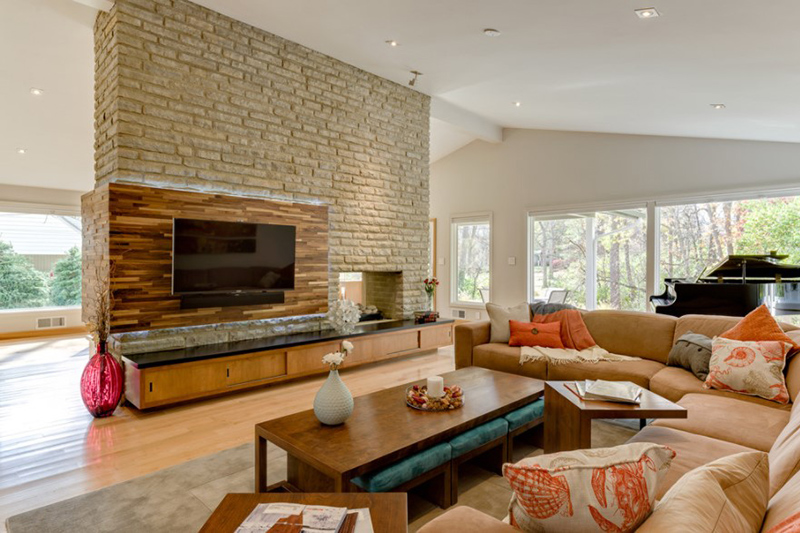
5. Rugs: Defining the Space and Adding Warmth
Rugs are a great way to define the space and add warmth to your living room. Choose a rug that is the right size and shape for your room and that complements your existing décor. A large rug can help to anchor the furniture and create a sense of unity. A smaller rug can be used to define a specific area, such as the seating area or the dining area. Consider using a patterned rug to add visual interest to the room. A soft and plush rug can add warmth and comfort to your living room.
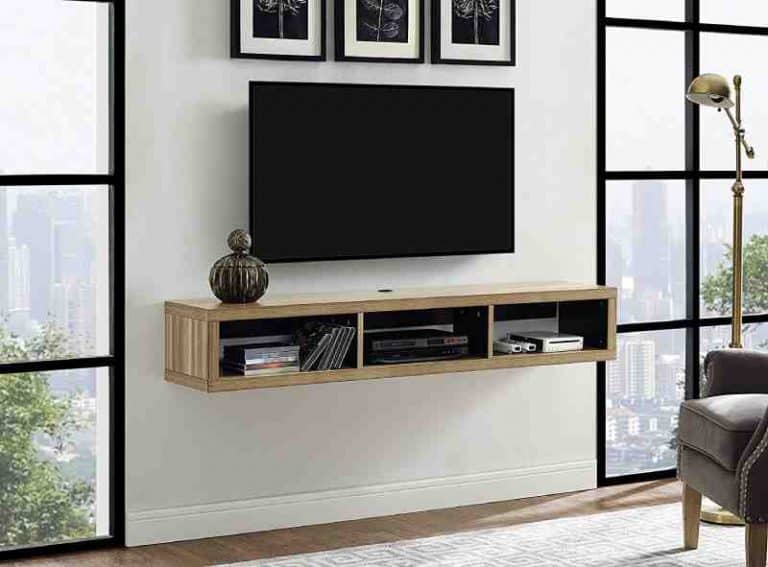
Conclusion: Transforming Your Living Room with a Floating TV Console
A floating TV console is more than just a piece of furniture; it’s a design statement that can transform your living room into a stylish, functional, and inviting space. By maximizing space, enhancing aesthetics, and concealing unsightly cables, a floating TV console offers a multitude of benefits that traditional floor-standing TV units simply cannot match. With careful planning, thoughtful design, and proper installation, you can create an entertainment area that reflects your personal style and caters to your needs.
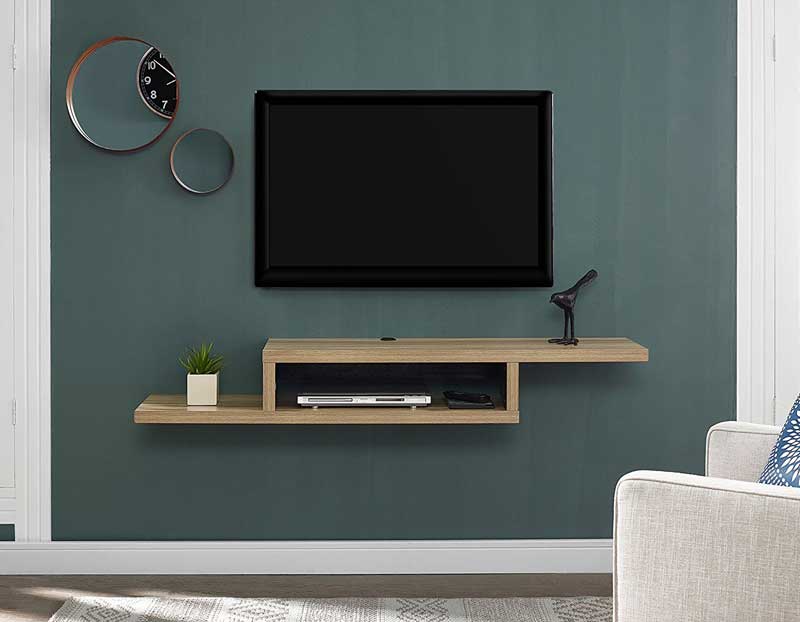
From choosing the right size and style to ensuring a secure and professional installation, this guide has provided you with the knowledge and inspiration to embark on your floating TV console journey. Embrace the modern elegance and practical advantages of floating TV consoles and elevate your living room to new heights of style and sophistication. So, take the plunge, reimagine your living space, and create an entertainment area that you’ll love for years to come. Make the floating TV console the centerpiece of your living room and experience the difference it can make!
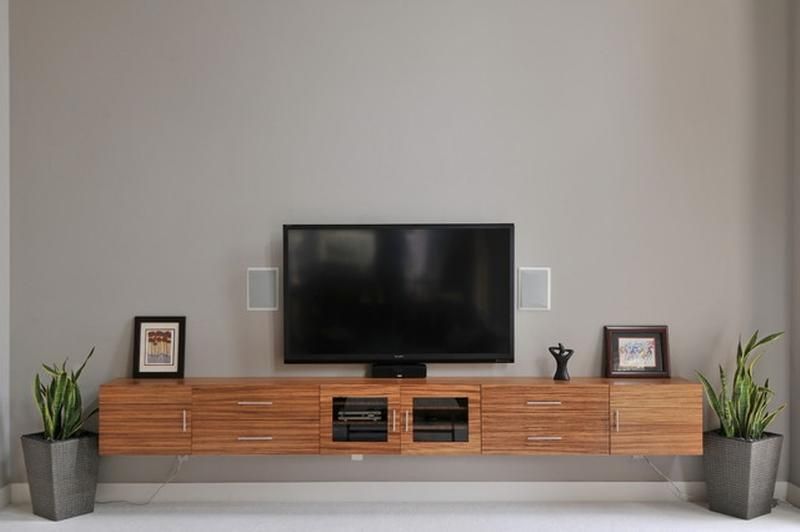
 Nimila
Nimila
